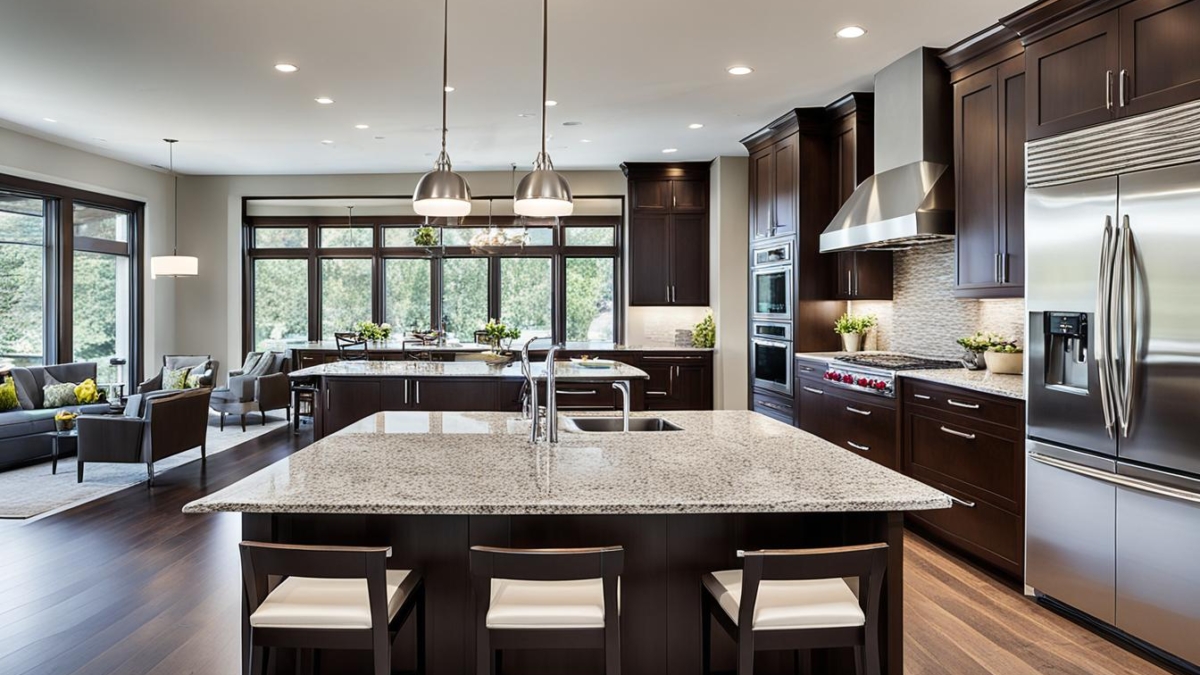Designing a new kitchen is an exciting endeavor. It’s the opportunity to create a space that perfectly combines key elements like functionality and style. After all, the kitchen is the heart of your home, where delectable meals are prepared, cherished memories are made, and cherished conversations are had.
When embarking on the journey of designing your new kitchen, it’s crucial to consider these key factors. Ensuring functionality is at the forefront means optimizing storage space, creating efficient workflow patterns, and selecting durable materials that stand the test of time. But it’s not just about functionality – style plays an equally important role. Your kitchen should reflect your personal taste and complement the overall design aesthetic of your home.
In this article, we will guide you through the essential considerations when designing your new kitchen. From blending functionality with style to transforming the heart of your home, we will provide valuable insights and tips to help you create a kitchen that truly embodies your vision.
Blending Functionality and Style in Designing New Kitchen
When it comes to designing your new kitchen, finding the perfect balance between functionality and style is crucial. Your kitchen should not only be a space that meets your practical needs but also reflects your personal taste and aesthetic preferences. In this section, we will explore the importance of blending functionality and style to create a kitchen that is both efficient and visually appealing.
One key consideration when designing your kitchen is optimizing storage space. Efficient storage solutions, such as pull-out pantry shelves, deep drawers, and overhead cabinets, can help keep your kitchen organized and clutter-free. By maximizing storage capacity, you can ensure that everything has its designated place, making your cooking and dining experience more enjoyable.
Another aspect to consider is the workflow pattern in your kitchen. Designing a kitchen layout that allows for a smooth and efficient workflow can greatly enhance your cooking experience. The placement of key elements such as the sink, stove, and refrigerator should be thoughtfully considered to create a functional and ergonomic work triangle. This not only facilitates ease of movement but also enhances safety and efficiency in the kitchen.
When selecting materials for your new kitchen, durability is key. Opt for high-quality materials that can withstand the wear and tear of daily use. From countertops to flooring to cabinetry, choose materials that not only look stylish but can also stand the test of time. Investing in durable materials now can save you from costly replacements or repairs in the future.
While functionality is important, it doesn’t mean you have to compromise on style. Infusing your kitchen with your desired aesthetic can be achieved through color schemes, lighting choices, and trendy design elements. Consider incorporating bold colors or sleek neutrals, statement lighting fixtures, and modern hardware to add a touch of personality to your kitchen space. Remember, a well-designed kitchen can serve as a focal point and conversation starter for your home.

Transforming the Heart of Your Home – Designing New Kitchen
A well-designed kitchen has the power to transform the heart of your home, creating a space that fosters social interactions and brings loved ones together. By thoughtfully considering the layout, functionality, and aesthetics, you can elevate your kitchen into a hub of warmth and hospitality.
One key aspect of creating a welcoming kitchen is to incorporate comfortable seating areas. Whether it’s a cozy breakfast nook, a stylish island with bar stools, or a dining table, these seating options encourage gathering, chatting, and enjoying meals together. Having a designated space for relaxation and conversation can truly enhance the social atmosphere in your kitchen.
Another crucial factor in designing your new kitchen is the layout. A well-organized and efficient layout not only promotes smooth workflow but also contributes to a harmonious ambiance. Consider the work triangle concept, positioning the sink, stove, and refrigerator in a way that allows for easy movement and reduces unnecessary steps. By optimizing the layout, you can create a functional space that accommodates both cooking and socializing.
Furthermore, don’t underestimate the transformative power of lighting and ambiance. Incorporate a combination of task lighting, accent lighting, and ambient lighting to set the mood and create a warm, inviting atmosphere. Consider using pendant lights above an island, under-cabinet lighting to illuminate workspaces, and dimmable options for flexibility. The right lighting can make your kitchen feel cozy, welcoming, and conducive to socializing.


Add a Comment